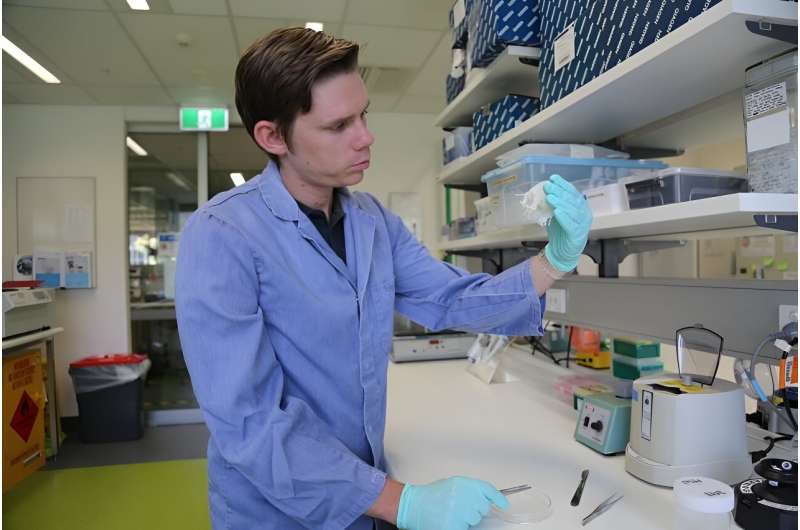This article has been reviewed according to Science X's editorial process and policies. Editors have highlighted the following attributes while ensuring the content's credibility:
fact-checked
peer-reviewed publication
trusted source
proofread
'CSI-like' investigations into box jellyfish movements could soon keep swimmers safer

Work by a James Cook University researcher could soon keep swimmers safer, thanks to a revolutionary technology that can track one of the world's most venomous animals, the Australian box jellyfish.
In a new paper published in the Marine Ecology Progress series, JCU Ph.D. candidate Scott Morrissey documents how Environmental DNA (eDNA) taken from water samples can be used to track the location of early polyp and mature tentacled medusae stages of the Australian box jellyfish in and around Port Musgrave on the western coast of the Cape York Peninsula.
"We can now utilize eDNA to locate deadly box jellyfish, which will improve our ability to understand these deadly creatures and in turn help us keep swimmers safer," Morrissey said.
"In this study, we took water samples in summer, when the stinging medusae stage is around, to find where they are and what they are doing, and then again in winter when the medusae are absent, so any detection we found at that time would reveal where their polyp stage was.
"Finding the polyps is very important as they give rise to the nasty stinging medusae stage, and we need to know where the stingers are coming from.
"Finding an actual polyp is very difficult, but with eDNA we believe we can detect them as eDNA is based on looking for an organism's genetic signature in the water instead of having to physically find the animal.
"It's essentially like a CSI crime show where detectives use fingerprints to locate a suspect."
Morrissey said the findings, which were confirmed as part of his four-year-long Ph.D., now opened the door to using eDNA to detect the presence of jellyfish in waters across Australia.
"For example, in Horseshoe Bay on Magnetic Island, we now know that the polyp stage of the box jellyfish is in the bay, so it's a high-risk area for swimmers as those polyps grow into medusae," he said.
"Knowing where the polyps are means we can adjust how we're looking for stingers when they mature into the medusae stage.
"Next, we are going to try and turn what we do in the lab into an in-field tool which could potentially be used by Surf Life Savers if we make it more user-friendly. This would help move towards something like an early warning system."
Morrissey said he found no detection of polyps in mangroves during his fieldwork at Port Musgrave, but instead on carbonate reefs near sandy beaches.
"Not only can we use eDNA to detect those polyps, but for the first time, we can use it to determine the habitats polyps are in," he said.
JCU Distinguished Professor of Marine Biology Michael Kingsford and JCU College of Science and Engineering Associate Dean Professor Dean Jerry were co-authors on Morrisey's study.
More information: SJ Morrissey et al, Use of eDNA to test hypotheses on the ecology of Chironex fleckeri (Cubozoa), Marine Ecology Progress Series (2023). DOI: 10.3354/meps14507
Journal information: Marine Ecology Progress Series
Provided by James Cook University



















